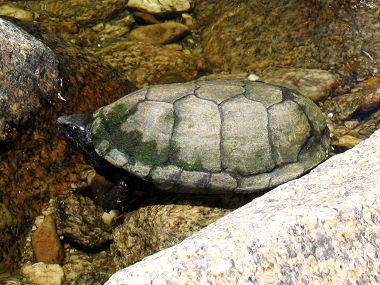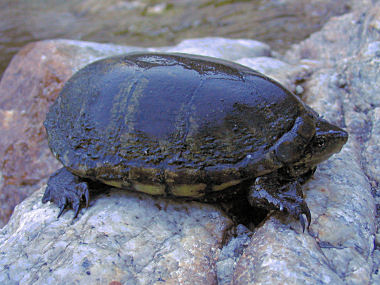The Sonoran Mud Turtle is a medium sized
(up to 6¼ inches long) turtle, somewhat elongated, with an olive-brown
shell and grey mottled skin. The shell is often partially covered with
 algae.
The turtle has several fleshy projections (called barbels) located under
the chin. Males have tails with a hooked tip. algae.
The turtle has several fleshy projections (called barbels) located under
the chin. Males have tails with a hooked tip.
|
There is some evidence that
crayfish (a non-native invasive species in the southwest) are
detrimental to Sonoran Mud Turtle populations due to predation on
hatchlings and small juvenile turtles. |
The Sonoran mud turtle is usually found near springs,
ponds, intermittent streams or creeks in oak to pinyon-juniper woodlands
or pine-fir forests. Occasionally it may be found in desert and
grassland regions as well as in stock ponds. They are active year round
although they may not feed in colder months. The species is distributed
from central Arizona to Durango, Mexico and southeastern California
(perhaps, some reports indicate the turtle may now be extinct in
California) to west Texas. The turtle feeds mainly on insects,
crustaceans, snails, fish, frogs, tadpoles, though will eat plant matter
in a pinch. Nesting occurs between May - September and females lay a
clutch of from 1 to 11 eggs.
 |

